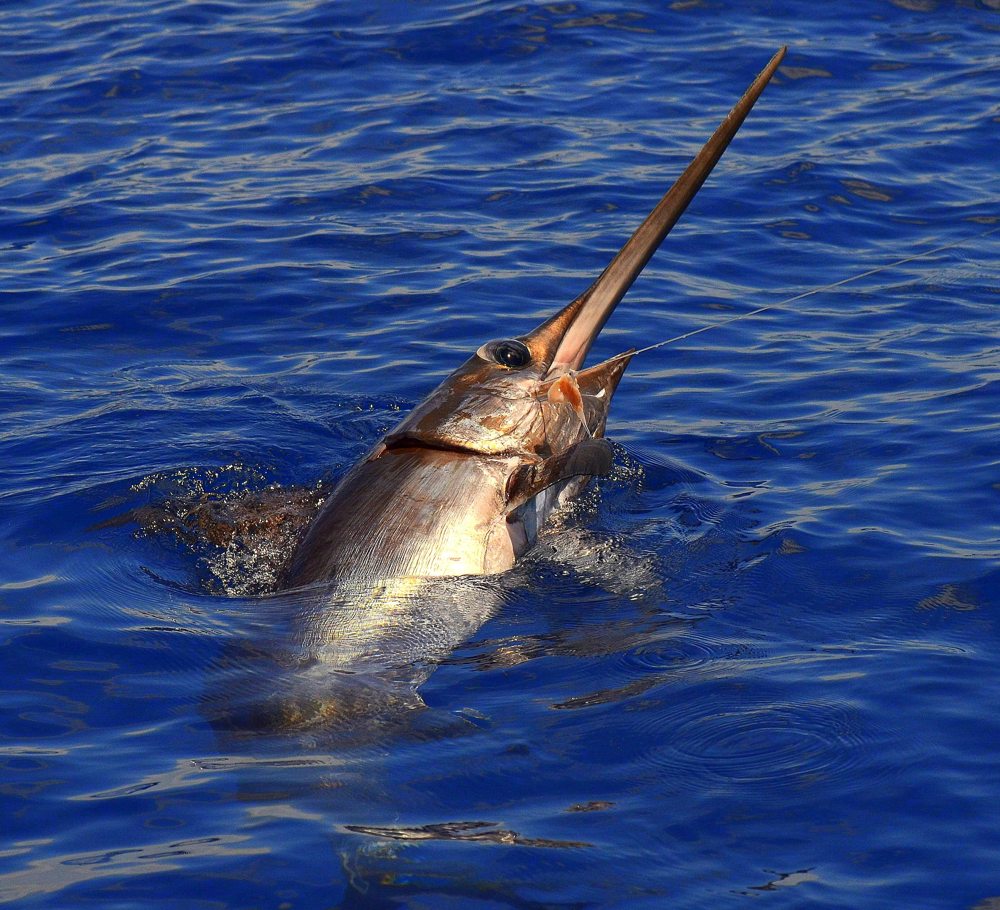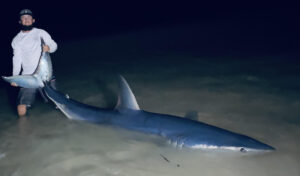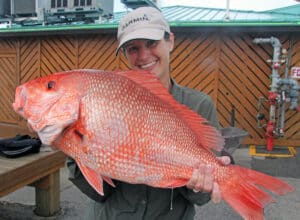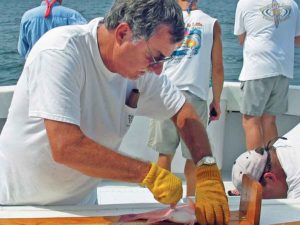
Have you ever wondered where swordfish travel day and night when they’re not hanging out at your favorite deepwater canyon? Gray FishTag Research tagged three swordfish in 2021 and documented some surprising movements of the deepwater species. If you’re not familiar with Gray FishTag Research, their efforts make up the world’s largest cooperative tagging program, relying on recreational anglers to help track and tag fish. All the data collected is shared with anyone interested for free.
Swordfish Tagging Results
One satellite tag was fitted to a 53-inch, 65-pound swordfish caught by Capt. Nick Stanczyk on the Broad Minded off Islamorada, Florida, on Feb. 9, 2021. More than seven months later, on Sept. 10, 2021, the tag released from the swordfish about 70 miles east of Fernandina Beach in Northeast Florida — far north of where the fish had been fitted with the device. The swordfish was tracked free-range swimming for 213 days up Florida’s Atlantic Coast.
The innovative tags used to track swordfish are called a “MiniPAT.” A MiniPAT is a pop-up archival transmitting tag designed to track movements and behaviors of fish. Depth, temperature, light-level and other data are collected in the onboard memory. Then on a preset date set by a researcher, the tag releases from its fish, surfaces, and uploads information to satellites for recovery.
A second MiniPat was tagged to an 80-inch, 240-pound swordfish on May 1, 2021, by Capt. Chris Koulouvaris, 38 miles off Ft. Lauderdale. The sword roamed open water for 242 days, before the MiniPat tag released from the fish on Dec. 29, 2021 less than 40 miles from the Cayman Islands.
Capt. Bouncer Smith, off Fort Lauderdale, fitted a third MiniPat on a 120-pound, 72-inch swordfish on May 1, 2021. The sword was tracked by satellite for 180 days before the tag released offshore Nova Scotia, Canada, on Nov. 3, 2021. That’s one heck of a distance to swim, covering the entire US Atlantic Coast.
Swordfish data learned from the tagging research is valuable to scientists studying the species. It also helps fish regulators better understand how to apply rules, especially if the data show swordfish don’t stay near a particular state’s coastline or even country. In total, all three tagged swordfish in 2021 showed just how far they roam. Whether they headed toward the Caribbean, Mid-Atlantic or as far north as Canada, the swords didn’t call one place home for long.
Full Moon Swordfish Activity
The Gray FishTag Research team verified that most swordfish travel from the surface to the depths in daylight and darkness — Atlantic swords head to the bottom during daybreak and ascend to the surface at dusk. That’s the traditional movements, we as anglers, can expect from swordfish.
Research also showed that water temperature likely plays a role in where swordfish live. Swordies don’t like hot water (although there were instances where swordfish were recorded basking at the surface by the team).
During a full moon, swordfish act a bit differently. Researchers learned that swordfish moved into slightly deeper depths during a full moon. The fish maintained a depth of 50 to 300 feet even at night, and lived within 300 feet of the bottom during the day due during this particular moon phase. That makes one wonder, do both light and temperature affect the up and down movement of swordfish in the water column? well, the recreational tagging data definitely suggests it.








